This article was co-authored by Karen Litzy, PT, DPT. Dr. Karen Litzy, PT, DPT is a licensed physical therapist, international speaker, owner of Karen Litzy Physical Therapy, PLLC, and the host of the Healthy Wealthy & Smart podcast. With over 20 years of experience, she specializes in a comprehensive approach to practicing physical therapy utilizing therapeutic exercises, manual therapy, pain education, and home exercise programs. Karen holds a Master of Science in Physical Therapy and a Doctor of Physical Therapy from Misericordia University. Karen is a member of the American Physical Therapy Association (APTA) and is an official spokesperson for the APTA as a member of their media corps. She lives and works in New York City.
There are 15 references cited in this article, which can be found at the bottom of the page.
This article has been viewed 145,317 times.
Back pain can be quite uncomfortable, but it usually goes away after a few weeks of home treatment. However, once you have back pain, it’s more likely to recur. Back pain can be brought on by heavy lifting or sudden uncoordinated movements, which can strain muscles and cause discs to rupture. Arthritis, osteoporosis, and curvature of the spine can all lead to back pain as well.[1] Treat minimal back pain with stretching, light movement, heat, and over the counter medications. For more serious and long-standing back pain, see your doctor and come up with a plan together.
Steps
Relieving Back Pain Immediately
-
1Ice your back as soon as you feel the pain. When you are first injured, ice can help tame your inflammation. Apply ice packs, frozen vegetables, or a frozen towel to your back during the first 24-72 hours of your injury. After that, switch to heat.[2]
- Apply cold for 20 minutes at a time.
- Don't apply cold therapy more than 10 times in a 24 hour period.
- Put a cloth between your skin and the ice.
-
2Apply heat going forward. After the initial period of icing your injury, apply heat. Heat will stimulate blood flow and promote healing.
- Make a warm compress or buy one. Electric heating pads, hot water bottles, heated gel packs, and saunas can all help.[3]
- Dry or moist heat may be applied.
- Try 15-20 minute sessions for minor injuries, and up to two hours at a time for more serious pain.
- A hot shower can also help alleviate sore muscles.[4]
Advertisement -
3Stretch. Once your pain has subsided, try some simple stretches at home. Not all stretches work for all kinds of back pain, so only do stretches that feel like they are relaxing your muscles and relieving your pain.[5]
- Try lying on your back on the floor. Slowly bring one knee up to your chest. Hold it for a count, then slowly extend your leg back to the floor.
- If your back hurts when you bend it forward, try stretching in the other direction. Lie on your stomach and prop yourself up on your elbows. If that feels fine, place your palms on the floor and extend your elbows slowly so that you are pushing yourself up from the floor. Keep your pelvis on the floor.
- If a stretch is painful, cease to do it until you have consulted with your doctor.
- Seek the advice of a chiropractor or your primary care physician to learn about the proper stretching techniques.
-
4Engage in light activities. While you may need to spend some time lying on the floor, rest is not generally a recommended cure for back pain. Rather, continue your ordinary routine as much as you can, but scaled back slightly. For instance, try going for walks, stretching, and otherwise moving around.[6]
- Stop any activity that is too painful.
- When you need to rest, try lying on your back on the floor. Prop your knees up with pillows for more comfort.
- Light movement can increase blood flow to your muscles and help loosen them up.[7]
-
5Visit a doctor if the pain is severe or long lasting. If your back pain does not resolve within a few days, visit your doctor. Back injury that results from a fall or other physical trauma require x-rays and other medical attention. If the pain is severe and unaffected by rest, contact your doctor sooner.[8] Seek immediate care if your pain is accompanied by numbness or tingling.[9]
Treating Chronic or Severe Back Pain
-
1Let your doctor assess you. Your doctor will look at your movements, and will check to see if you can sit, stand, walk, and lift your legs in different ways. You will be asked to rate your pain on a scale of 1-10. Depending on your symptoms, your doctor or chiropractor may order any number of tests, including:[10]
- X-rays.
- MRIs or CT scans.
- Bone scans.
- Blood tests.
- Nerve studies.
-
2Attend physical therapy or visit a chiropractor. Adjustments and physical therapy are the most effective form of back injury recovery. Physical therapists and chiropractors can relieve your pain with adjustments, ultrasounds, electrical stimulation, and other techniques not available to you at home.[11]
- Learn stretches and exercises from your physical therapist or chiropractor, and follow their instructions for home treatments.
- Make sure you get a physical therapist or chiropractor your doctor trusts. Check that they're in communication about your treatment over time.
-
3Get a custom stretching routine. Your physical therapist or chiropractor may recommend certain exercises and postures for you to do at home. Do these as prescribed. Don't rush when you stretch: move slowly so that your muscles have a chance to relax.[12]
- Not all back pain responds to the same stretches. Doing the wrong stretch can worsen your injury.
-
4Consider steroidal injections. If conservative management like self-treatment, physical therapy, or chiropractics haven't helped, your doctor may want to give you a cortisone or numbing injection in the space around your spinal cord. This will reduce inflammation around the nerve, which can substantially reduce the pain you are in. The effects only last a few months, though, and the procedure can't be repeated too many times. Discuss the risks and benefits with your doctor.[13]
- Your doctor may want you to get a steroid shot so that you can get through an effective physical therapy program.
-
5Discuss surgery with your doctor. Surgery is rarely necessary for back pain, and is not reliably effective. However, it may be worth considering as a last resort, in cases of severe pain or increasing weakness, or if there's an immediate, threatening condition.[14]
- Your doctor may recommend surgery if you have a structural problem, such as a narrowed spine or a severely herniated disc.
Avoiding Back Injuries
-
1Lift properly. When lifting things, avoid relying on your back. Instead, stand close to the object you are about to lift. Face the direction you intend to carry the object. Tighten your abdominal muscles, stand with a wide stance, and bend your knees. Do not lift suddenly, and do not twist or bend sideways while lifting.[15]
- For heavy loads, lift with straight arms, and tuck your chin in.
-
2Improve your posture. Try to sit and stand in a relaxed position. Imagine a string pulling up your head from the crown. Straighten your neck so that it supports the weight of your head. Roll your shoulders back and relax them. Tighten your stomach muscles so they support your spine.[16]
- If you have to stand for while, relieve pressure on your lower back by propping one foot on a stool. You can also rotate your ankles one foot at a time to relieve pressure on the lower back.
- When sitting for a length of time, sit with your legs and arms parallel to the floor. Sit back in your seat for support. Settle your feet on the floor.
- Shift positions often to keep your muscles from tensing up.
-
3Strengthen your core muscles. A lack of exercise can lead to weak back muscles, which can lead to back injury. While core muscle strength is not definitively linked to lower back injury risk, there is some evidence to support it.[17]
- Try core stabilization exercises such as plank, side bridge, and supine bridge.
- Balance exercises, such as single leg stance, may also increase core strength.
- Try leg jumps and bounding, as well as regular strength training exercises such as lunges, squats, and hamstring curls.[18]
-
4Be mindful of your stress. If you have back pain, your attitude toward it may shape your recovery. Stress, worry, anxiety, and depression can make it harder to recover from back injury. Anxiety, in particular, can worsen your experience of pain.[19]
- Mindfulness is incredibly effective at improving your experience of back pain. Consider taking a course in mindfulness-based stress reduction.[20]
- Cognitive-behavioral and self-regulatory therapies may help. Ask your physician to refer you to a qualified therapist.[21]
Relieving Back Pain with Integrative Medicine
-
1See an acupuncturist. Acupuncture is a form of traditional Chinese medicine. It involves long sterilized needles that are inserted into key points of your body. Acupuncture is effective at treating many forms of pain, though studies have not clearly shown what its most effective uses are. It is as safe as other forms of medicine, as long as the needles are sterilized and the acupuncturist is experienced.[22]
- Find an acupuncturist who is licensed by the state.
- Try acupuncture in combination with visiting a chiropractor and attending physical therapy.
-
2Get a good massage. Back pain caused by muscle tension or overuse can be relieved by massage. Let your masseuse know where you hurt, and speak up if they do anything that feels painful or wrong.[23]
- The body compensates for pain by using other muscles that are not usually used. These muscles become sore and tight, and massage can relieve some of this tension.
-
3Go to yoga or pilates classes. Taking classes with an experienced yoga or pilates teacher can be an excellent way to strengthen and relax your back muscles. Some kinds of yoga will be better for your back than others. Ask your doctor or physical therapist for recommendations.[24]
- When you stretch, stop if something hurts or feels off. You may need to skip or adjust some stretches to accommodate your injury.
What Yoga Poses Can I Do When Sitting At The Computer?
Expert Q&A
Did you know you can get expert answers for this article?
Unlock expert answers by supporting wikiHow
-
QuestionWhat should I do if stretching doesn't help my back?
 Karen Litzy, PT, DPTDr. Karen Litzy, PT, DPT is a licensed physical therapist, international speaker, owner of Karen Litzy Physical Therapy, PLLC, and the host of the Healthy Wealthy & Smart podcast. With over 20 years of experience, she specializes in a comprehensive approach to practicing physical therapy utilizing therapeutic exercises, manual therapy, pain education, and home exercise programs. Karen holds a Master of Science in Physical Therapy and a Doctor of Physical Therapy from Misericordia University. Karen is a member of the American Physical Therapy Association (APTA) and is an official spokesperson for the APTA as a member of their media corps. She lives and works in New York City.
Karen Litzy, PT, DPTDr. Karen Litzy, PT, DPT is a licensed physical therapist, international speaker, owner of Karen Litzy Physical Therapy, PLLC, and the host of the Healthy Wealthy & Smart podcast. With over 20 years of experience, she specializes in a comprehensive approach to practicing physical therapy utilizing therapeutic exercises, manual therapy, pain education, and home exercise programs. Karen holds a Master of Science in Physical Therapy and a Doctor of Physical Therapy from Misericordia University. Karen is a member of the American Physical Therapy Association (APTA) and is an official spokesperson for the APTA as a member of their media corps. She lives and works in New York City.
Physical Therapist
-
QuestionDoes cracking your back relieve back pain?
 Karen Litzy, PT, DPTDr. Karen Litzy, PT, DPT is a licensed physical therapist, international speaker, owner of Karen Litzy Physical Therapy, PLLC, and the host of the Healthy Wealthy & Smart podcast. With over 20 years of experience, she specializes in a comprehensive approach to practicing physical therapy utilizing therapeutic exercises, manual therapy, pain education, and home exercise programs. Karen holds a Master of Science in Physical Therapy and a Doctor of Physical Therapy from Misericordia University. Karen is a member of the American Physical Therapy Association (APTA) and is an official spokesperson for the APTA as a member of their media corps. She lives and works in New York City.
Karen Litzy, PT, DPTDr. Karen Litzy, PT, DPT is a licensed physical therapist, international speaker, owner of Karen Litzy Physical Therapy, PLLC, and the host of the Healthy Wealthy & Smart podcast. With over 20 years of experience, she specializes in a comprehensive approach to practicing physical therapy utilizing therapeutic exercises, manual therapy, pain education, and home exercise programs. Karen holds a Master of Science in Physical Therapy and a Doctor of Physical Therapy from Misericordia University. Karen is a member of the American Physical Therapy Association (APTA) and is an official spokesperson for the APTA as a member of their media corps. She lives and works in New York City.
Physical Therapist
-
QuestionIs walking good for back pain?
 Karen Litzy, PT, DPTDr. Karen Litzy, PT, DPT is a licensed physical therapist, international speaker, owner of Karen Litzy Physical Therapy, PLLC, and the host of the Healthy Wealthy & Smart podcast. With over 20 years of experience, she specializes in a comprehensive approach to practicing physical therapy utilizing therapeutic exercises, manual therapy, pain education, and home exercise programs. Karen holds a Master of Science in Physical Therapy and a Doctor of Physical Therapy from Misericordia University. Karen is a member of the American Physical Therapy Association (APTA) and is an official spokesperson for the APTA as a member of their media corps. She lives and works in New York City.
Karen Litzy, PT, DPTDr. Karen Litzy, PT, DPT is a licensed physical therapist, international speaker, owner of Karen Litzy Physical Therapy, PLLC, and the host of the Healthy Wealthy & Smart podcast. With over 20 years of experience, she specializes in a comprehensive approach to practicing physical therapy utilizing therapeutic exercises, manual therapy, pain education, and home exercise programs. Karen holds a Master of Science in Physical Therapy and a Doctor of Physical Therapy from Misericordia University. Karen is a member of the American Physical Therapy Association (APTA) and is an official spokesperson for the APTA as a member of their media corps. She lives and works in New York City.
Physical Therapist
Warnings
- Auto accidents that cause back or neck pain, especially those involving whiplash, should be treated by a professional immediately.⧼thumbs_response⧽
- If you have severe pain or injury, such as not being able to move after lifting something heavy, seek immediate medical attention.⧼thumbs_response⧽
References
- ↑ https://my.clevelandclinic.org/health/diseases/7936-lower-back-pain
- ↑ https://www.spine-health.com/blog/should-i-use-ice-or-heat-my-lower-back-pain
- ↑ https://www.spine-health.com/treatment/heat-therapy-cold-therapy/how-apply-heat-therapy
- ↑ Jason Myerson, DPT, DMT, OCS, FAAOMPT. Physical Therapist & Certified Orthopedic Specialist. Expert Interview. 15 April 2020.
- ↑ Karen Litzy, PT, DPT. Physical Therapist. Expert Interview. 27 August 2020.
- ↑ https://www.nhs.uk/conditions/back-pain/
- ↑ Jason Myerson, DPT, DMT, OCS, FAAOMPT. Physical Therapist & Certified Orthopedic Specialist. Expert Interview. 15 April 2020.
- ↑ https://www.nhs.uk/conditions/back-pain/
- ↑ Jason Myerson, DPT, DMT, OCS, FAAOMPT. Physical Therapist & Certified Orthopedic Specialist. Expert Interview. 15 April 2020.
- ↑ https://www.ninds.nih.gov/Disorders/Patient-Caregiver-Education/Fact-Sheets/Low-Back-Pain-Fact-Sheet
- ↑ https://my.clevelandclinic.org/health/diseases/7936-lower-back-pain
- ↑ https://www.ninds.nih.gov/Disorders/Patient-Caregiver-Education/Fact-Sheets/Low-Back-Pain-Fact-Sheet
- ↑ https://my.clevelandclinic.org/health/diseases/7936-lower-back-pain
- ↑ https://www.ninds.nih.gov/Disorders/Patient-Caregiver-Education/Fact-Sheets/Low-Back-Pain-Fact-Sheet
- ↑ https://www.ccohs.ca/oshanswers/ergonomics/inj_prev.html
- ↑ Karen Litzy, PT, DPT. Physical Therapist. Expert Interview. 27 August 2020.
- ↑ https://www.ncbi.nlm.nih.gov/pmc/articles/PMC3806175/
- ↑ https://www.ncbi.nlm.nih.gov/pmc/articles/PMC3806175/table/table1-1941738113481200/
- ↑ https://www.health.harvard.edu/blog/psychology-low-back-pain-201604259537
- ↑ https://www.ncbi.nlm.nih.gov/pmc/articles/PMC4754498/
- ↑ https://www.ncbi.nlm.nih.gov/pubmed/17209691
- ↑ https://nccih.nih.gov/health/acupuncture/introduction#hed3
- ↑ https://www.nhs.uk/conditions/back-pain/
- ↑ https://www.ncbi.nlm.nih.gov/pmc/articles/PMC2684152/
About This Article
To get rid of back pain, apply an ice pack or a bag of frozen vegetables to your back for 20 minutes at a time during the first few days after your injury. Then, apply a heating pad or warm compress for 20 minutes at a time going forward, which will relieve pain and promote healing. If your back pain persists, try taking an over-the-counter pain reliever, like ibuprofen. You can also try doing simple stretches while lying on the floor as long as they're not causing you any pain. To learn how to get rid of chronic or severe back pain, scroll down!
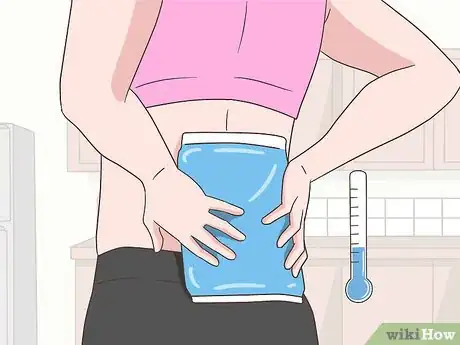


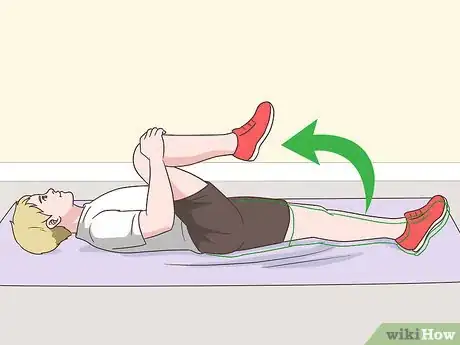

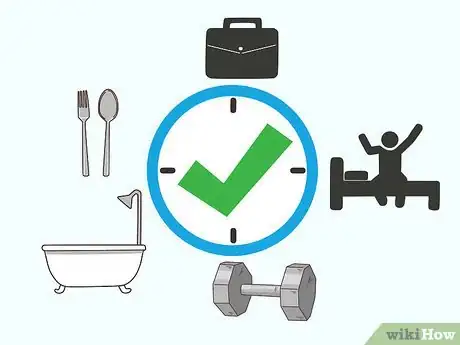
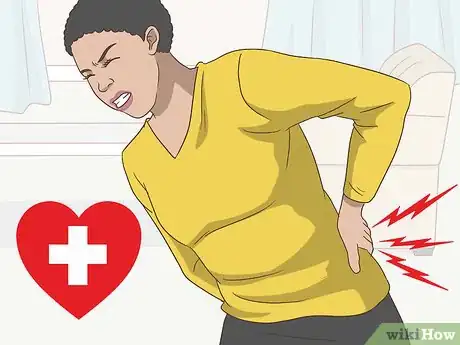
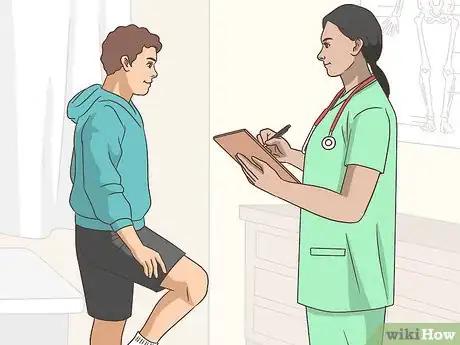

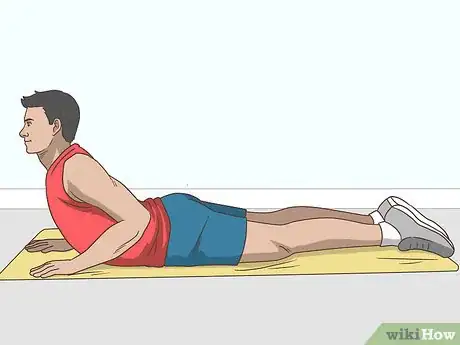
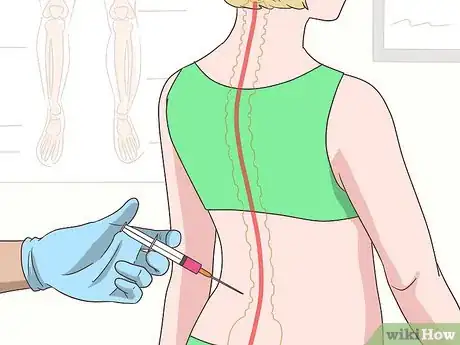

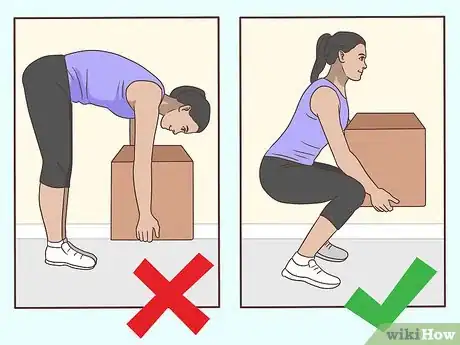
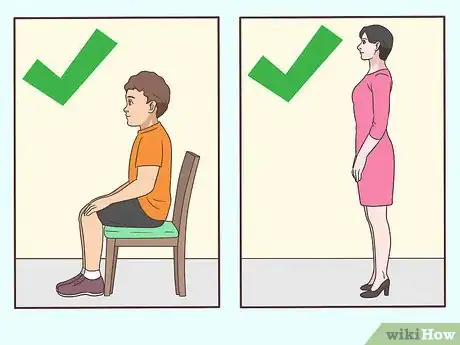


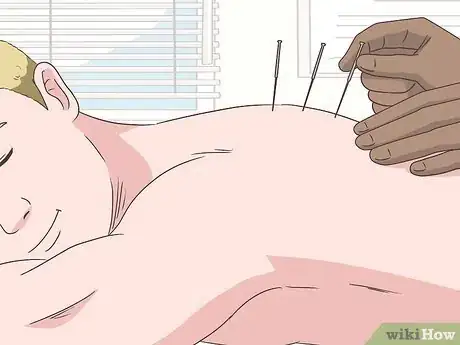
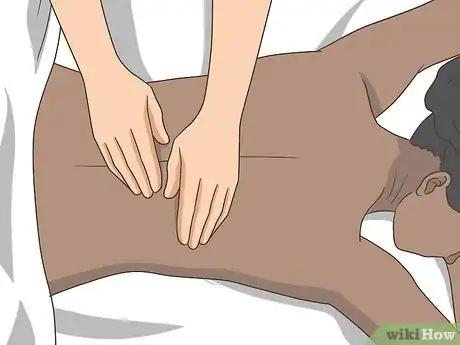
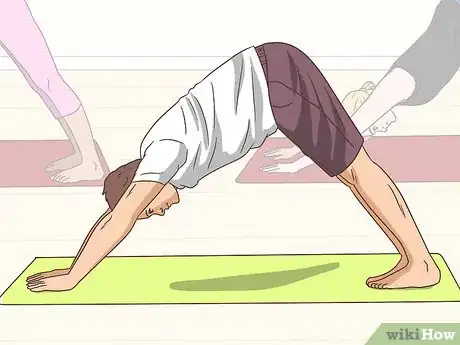
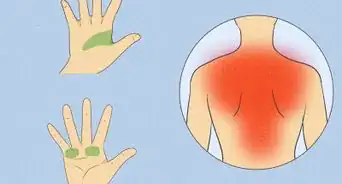
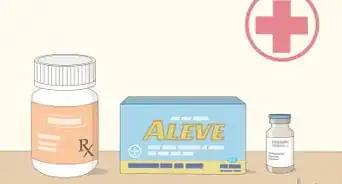
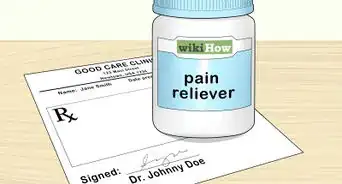



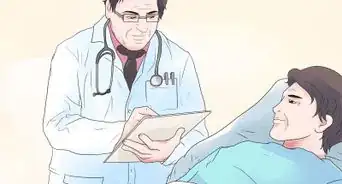
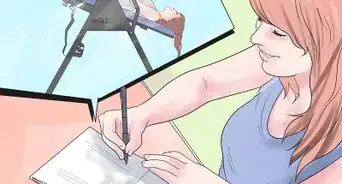
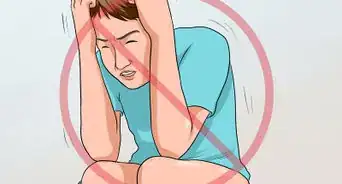

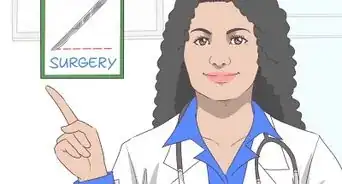
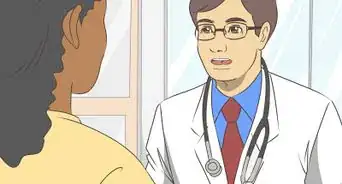
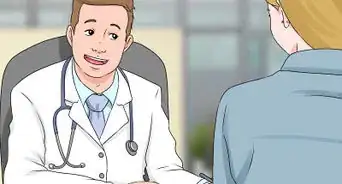
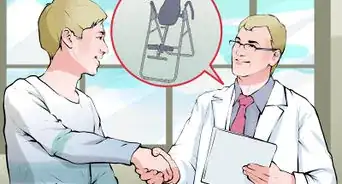







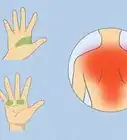
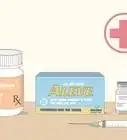

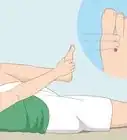




































Medical Disclaimer
The content of this article is not intended to be a substitute for professional medical advice, examination, diagnosis, or treatment. You should always contact your doctor or other qualified healthcare professional before starting, changing, or stopping any kind of health treatment.
Read More...